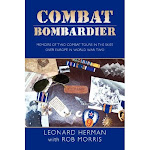
Billie Jo Reid was the wife of one of the original owners of the McDonald franchises in Denver. As I believe he had 19 outlets. Billie Jo flew in several 99 races sponsored by her husband Carl. She also flew the company King Air.
The other two were Pat Sullivan and Betty Clark. After the war they started a crop dusting business in Steamboat and moved to Rifle, CO. Betty was from Rifle and there was more business there and in Grand Junction. They operated out of both areas.
Betty did most of the flying and Pat ran the loading, office operations and field scouting. In 1970 I took my plane down to help Betty out for few days, it turned into an all summer contract flying both out of Rifle and Grand Junction.
Betty and I flew back up to Rifle one evening as Pat had said we had some alfalfa fields to scout and spray. These were big fields, 40 acres. The fields in Junction were 5 and 10 acre patches, yank and bank type, power lines and houses.
We met the farmer out in the field that evening to inspect the insect damage. There was plenty of evidence of alfalfa weevil feeding and damage. Pat came running up to us and showed the farmer a handful of weevil. The farmer took one look and said they were all dead, got in his pickup and drove away.
Pat had collected some weevil from a pasture near the airport and put them in an aspirin bottle. Wanting to convince the farmer he had a problem, she shook the weevil out in her hand to show him. Sure enough they were dead, the aspirin had killed them. We lost the job.
Betty and Pat have both passed away. I'm not sure about Billie Jo, I haven't seen her since 1976 and her health was not good then.
One more story about Betty. A United DC-4 was flying from Denver to Grand Junction and lost an engine somewhere east of Rifle and another engine was miss firing so the pilot elected to set the plan down at the Rifle airport. The runway was pretty short but he got in stopped before going off the west end.
A maintenance crew came in from Denver to access the damage and how they were going to get the plane out of there. The consensus was the runway was too short so they were going to have to disassemble the plane and either truck it back to Denver or on to Grand Junction and reassemble the plane there. Trucking it out of there was going to be a real challenge. This was before the intra state highway l-70.
Betty and the mechanics sat around for a bit that evening having a toddy or two and Betty told them if they would replace the two engines they could fly the "damn thing" out of there. We after many phone calls to United in Denver it was decide it may be possible.
The two engines were replaced and a crew showed up to fly the plane to Grand Junction. After walking the runway, doing some calculations the crew said there is no way they would try to fly the plane out even with minimum fuel. There were more calls to Denver between the mechanics, pilots and operations explaining the situation.
Betty had about all she could stand and said she would fly the "damn thing" out of there for $500 and she didn't need a crew only someone to raise and lower the flaps and the gear and if they couldn't find someone she could even do that.
It was agreed to give it a try. They pushed the plane to the far end of the east edge of the runway. The main gear was just on the runway, most of the fuselage was overhanging a ravine at the end of the runway.
Betty and one of the mechanics that volunteered stood on the brakes while she ran the engines up to maximum power. The plane was literally jumping up and down. She released the brakes and roared down the runway. About two thirds of the runway, the plane was air borne. The flight was uneventful to Grand Junction.
A few days later Betty received a phone call and a letter from the CAA, the predecessor to the FAA, about the flight. She wasn't rated in a DC-4, inadequate crew members and so on. She hung up on the guy and filed the letter where we filed most of the letters from the feds. Betty had ferried B-17's so she was no stranger to four engine aircraft.
Sorry about the rambling Rob, but those were three gals I real admired.
Jay"








